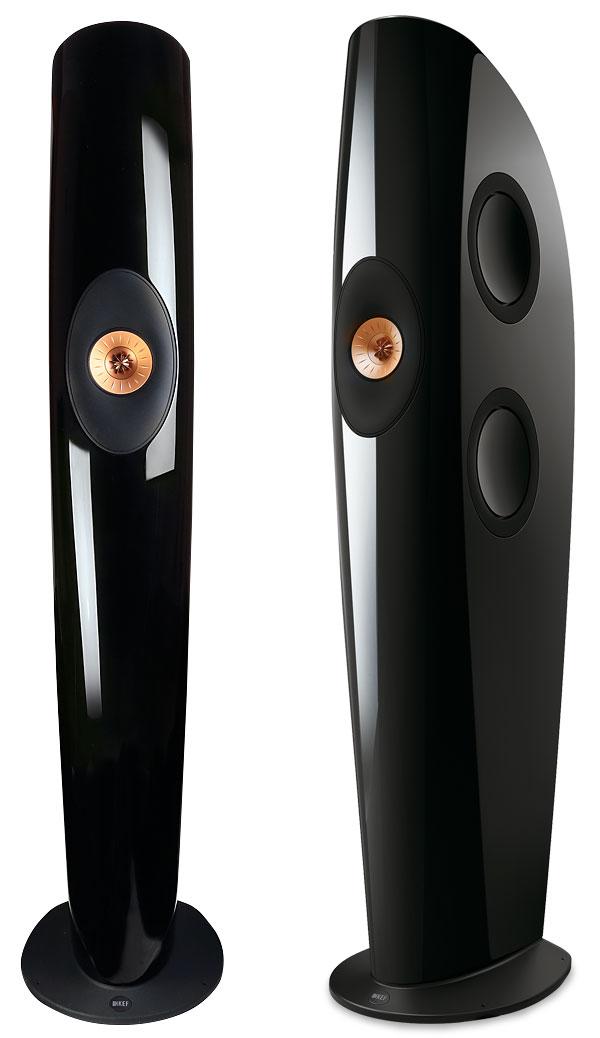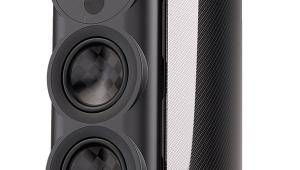KEF Blade One Meta Loudspeaker

 KEF's flagship Blade cuts to the heart of the music, and with 'MAT' on board its edge has never been keener
KEF's flagship Blade cuts to the heart of the music, and with 'MAT' on board its edge has never been keener
More than a decade after their launch, there's still nothing quite like the KEF Blade One speakers. Well, OK, there's the smaller Blade Two [HFN Jul '15], but the point still stands! The result of one of those 'no constraints' projects that speaker companies seem to love, the original 'Concept Blade' created a stir with its radical styling and carbon-fibre construction. The final retail version employed a more production-friendly high-density polycarbonate, but the speakers were unmistakably the same, and just as unmistakably odd.
Yes, KEF has previous form in this 'from concept to reality' thing: after all, it did make the huge – and arguably even more bonkers – Muon floorstanders [HFN May '08], which remain in the catalogue if you happen to have £180,000 burning a hole in your bank account. However, while the Blade One – now in its upgraded 'Meta' form – may look as startling as it did when it launched in 2011, with its seemingly top-heavy inverted propellor-vane shape, there is solid method in the apparent madness. In fact, the shape of the Blade is key to KEF's aim of a 'Single Apparent Source' loudspeaker, one in which the sound created by the speaker appears to emanate from a single point.
Taking Centre Stage
In practice, this is the thinking behind the company's Uni-Q drive unit – a mainstay of KEF designs since it debuted in 1988 – taken to its logical conclusion. The Uni-Q places the tweeter at the centre of the midrange driver with the intention of delivering the output of the two drivers as a single, coherent whole. The idea is to enhance stereo imaging, focus and soundstaging, in a way that's hard to achieve with conventional drive units spaced apart.
In the Blade model, the combination of a single Uni-Q unit containing tweeter and midrange, plus multiple side-firing bass units, endeavours to create the same effect, but with greatly extended frequency range. And at the risk of cutting to the chase so early in our review, it pulls this trick off in spectacular fashion.

While the treble/mid Uni-Q driver in the Blade One Meta may look familiar to owners of the 'single driver' LS50 standmount, the path of influence actually runs in the opposite direction. In fact it was the development of the Blade's Uni-Q that led to the emergence of the LS50 [HFN Jul '12], a year after the original Blade speaker to mark the company's 50th anniversary. Subsequently, it's hard to argue with the impact the LS50 design has had on the KEF range, spawning both wireless [HFN Oct '17] and compact versions over the past decade.
Black Hole
At the heart of the Blade One Meta is the latest version of the Uni-Q, now in its 12th generation and complete with KEF's Metamaterial Absorption Technology – also used in the company's updated Meta versions of its Reference series. The driver combines a 25mm dome tweeter with a stiffened dome and a revised tweeter gap damper to accommodate the metamaterial absorber behind it. This circular device uses a complex maze-shaped structure of channels to absorb a claimed 99% of the sound from the rear of the tweeter – or, as KEF puts it, it acts as 'an acoustic black hole' – to give a purer, cleaner mid/treble output [for a deep dive into Meta, see HFN Jun '21].
Finally, the company's familiar 'tangerine' segmented waveguide is used to control, and widen, treble dispersion. The tweeter sits in the throat of a 125mm aluminium-cone midrange unit with a new motor designed for extremely low distortion. The surround is redesigned to allow longer excursion while the profiles have been reworked to smooth the transition from the face of the driver to the cabinet geometry.
Good Vibrations
The Blade One Meta's four bass drivers fire sideways in horizontally opposed pairs, thus cancelling out vibrations in the cabinet, with each pair in its own chamber within the enclosure. These 225mm woofers have slightly dished aluminium diaphragms, and employ the technique found in the original Blade of decoupling the voice coil from the cone, allowing lower-order crossovers to roll in the bass units at around 350Hz. As in the original design, twin sets of terminals are provided for bi-wire/bi-amping, with a novel twist selector that connects them for standard, single-wire operation.

















































